Abstract
During the development of a macronucleus from a micronucleus after cell mating in hypotrichs all the genes (approximately 20,000) are excised from micronuclear chromosomes as individual small DNA molecules. Telomeres are added to the ends of each gene-sized molecule and each is amplified, mostly by approximately 1000-fold, to yield a transcriptionally active macronucleus. As a part of the study of the excision of genes from chromosomes, we have cloned six fragments of chromosomal DNA from Oxytricha nova, each containing a full copy of an actin gene, for comparison with the structure of the actin-encoding DNA molecule in the macronucleus. All six micronuclear actin clones had the same overall organization as judged by restriction mapping. Two micronuclear actin clones were sequenced. These differ from one another at a few nucleotide positions but both prescribe precisely the same actin polypeptide. Both micronuclear actin genes contain nine exons separated by eight intron-like sequences. The macronuclear gene contains these nine exons without intron-like segments. Assigning the order 1 through 9 to the nine micronuclear exons, the order in the macronucleus is 8-7-1-2-4-3-5-9-6. In the micronuclear actin gene, all nine exons possess terminal repeat sequences. These repeat sequences provide precise directions for reordering and joining of the nine exons to yield the exon order in the macronuclear gene. Polymerase chain reaction analysis of micronuclear DNA of the related species, Oxytricha trifallax, shows that the actin gene has an unorthodox arrangement in this species also.
Full text
PDF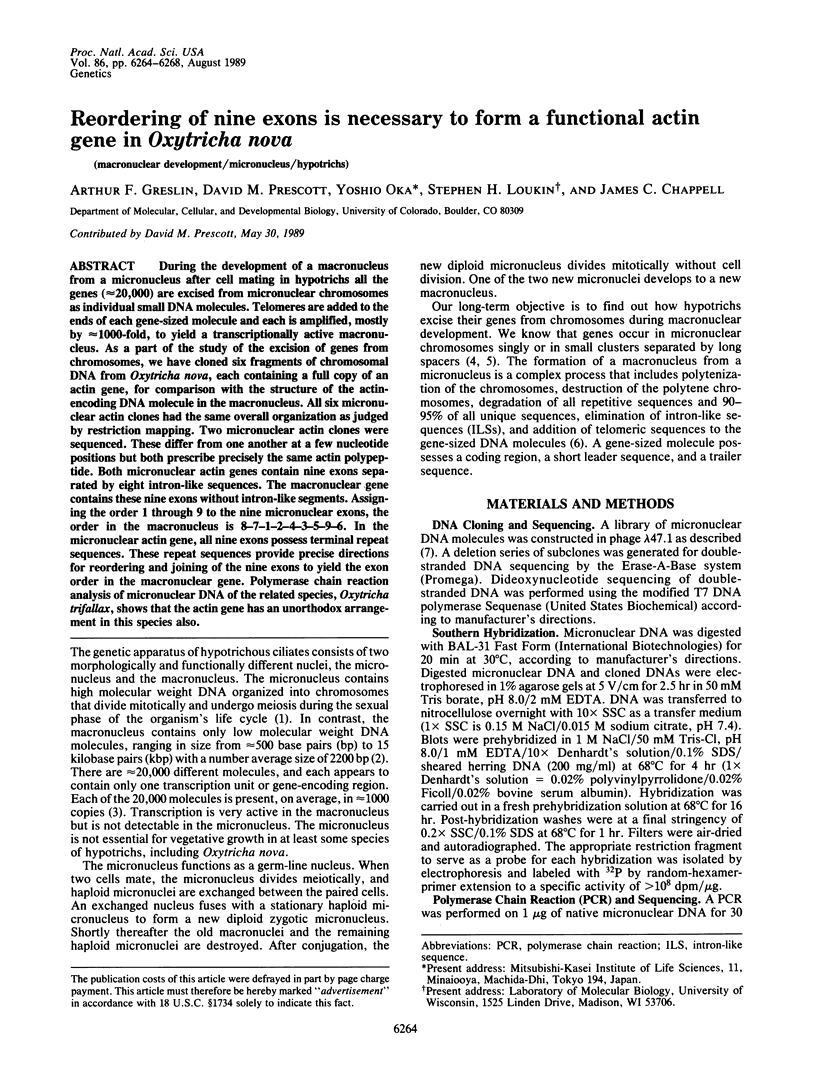
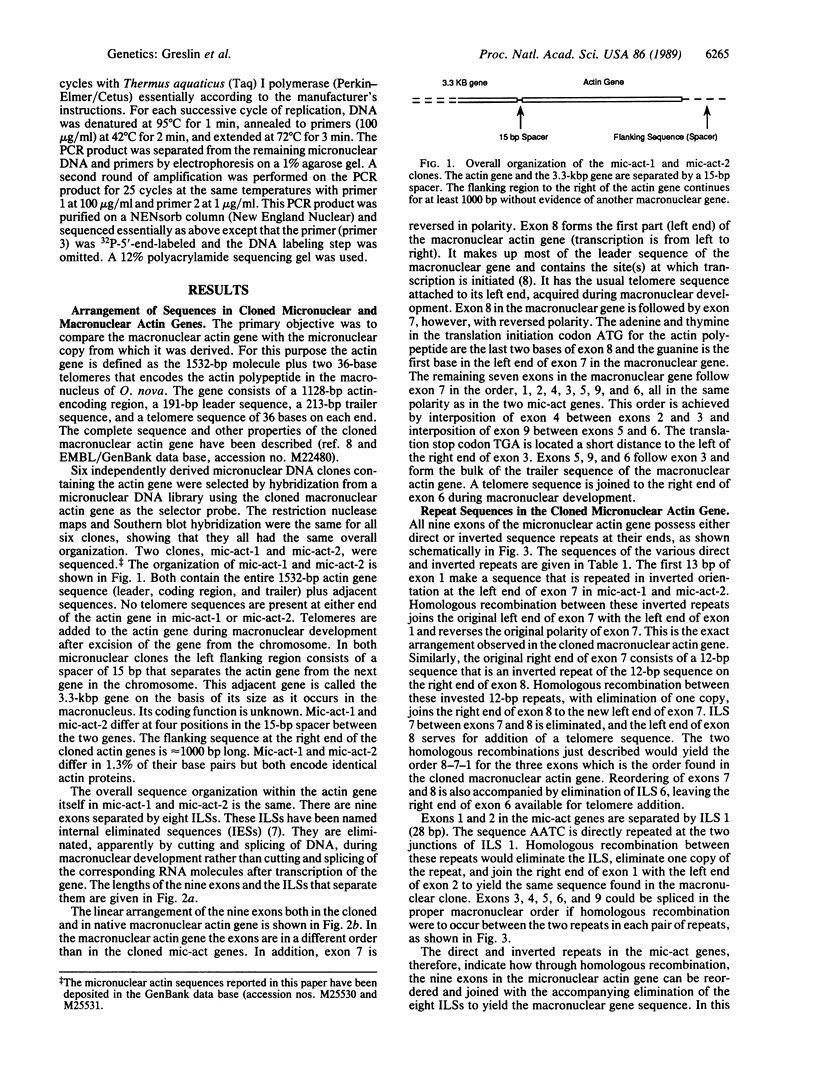
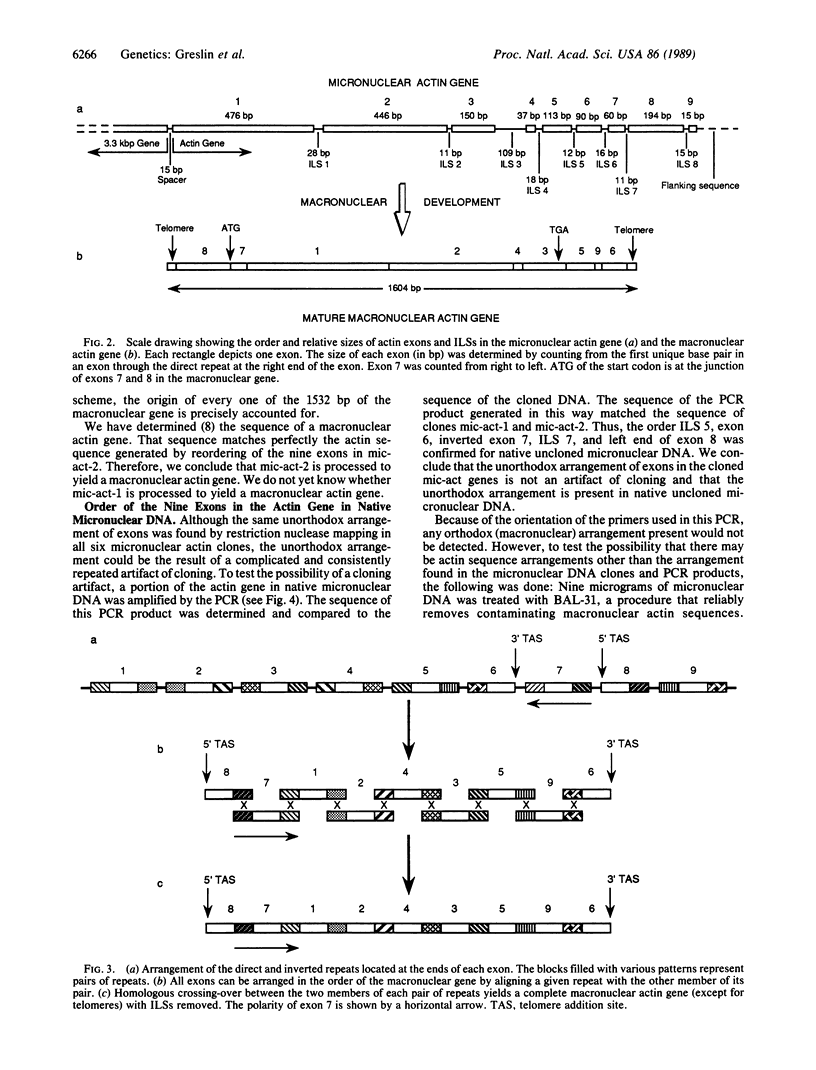
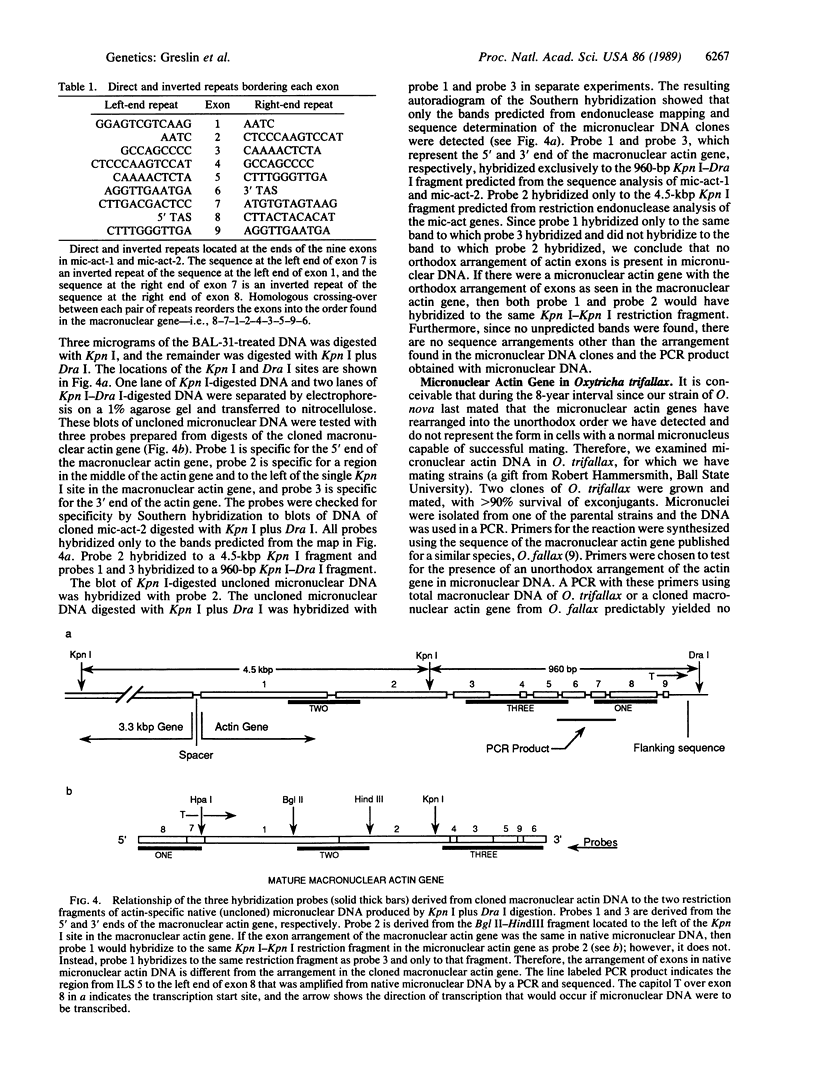
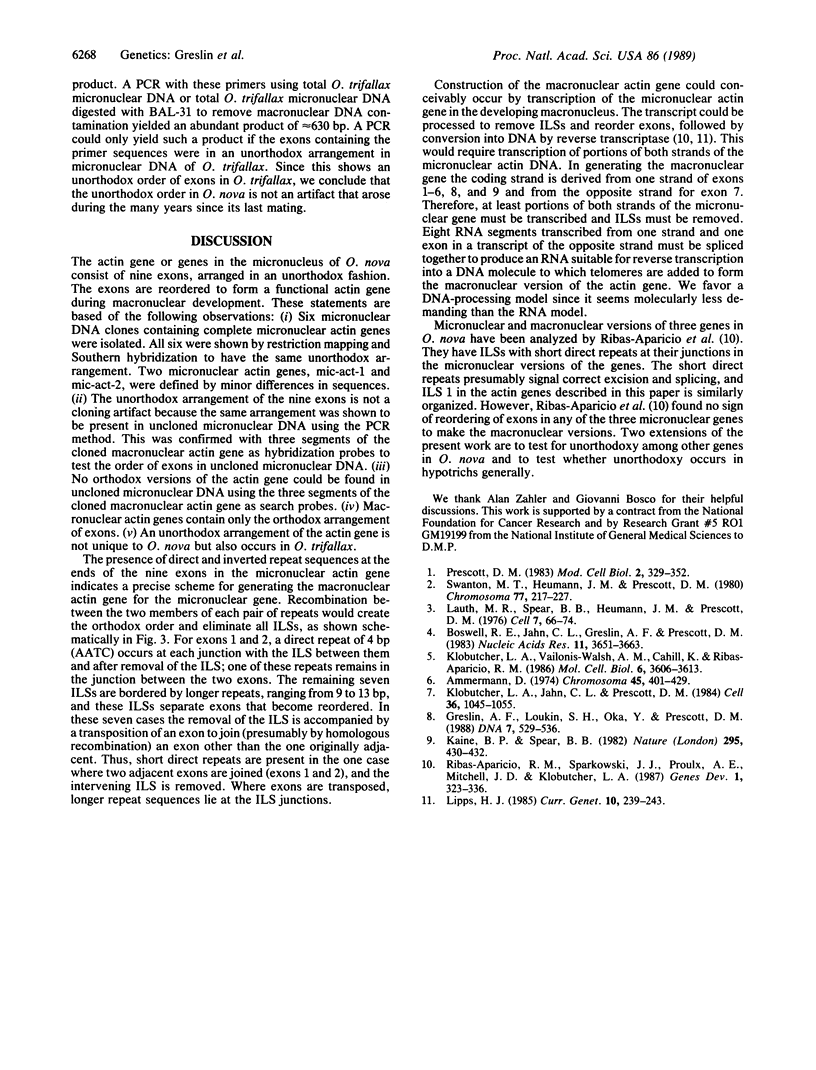
Selected References
These references are in PubMed. This may not be the complete list of references from this article.
- Ammermann D., Steinbrück G., von Berger L., Hennig W. The development of the macronucleus in the ciliated protozoan Stylonychia mytilus. Chromosoma. 1974 May 10;45(4):401–429. doi: 10.1007/BF00283386. [DOI] [PubMed] [Google Scholar]
- Boswell R. E., Jahn C. L., Greslin A. F., Prescott D. M. Organization of gene and non-gene sequences in micronuclear DNA of Oxytricha nova. Nucleic Acids Res. 1983 Jun 11;11(11):3651–3663. doi: 10.1093/nar/11.11.3651. [DOI] [PMC free article] [PubMed] [Google Scholar]
- Greslin A. F., Loukin S. H., Oka Y., Prescott D. M. An analysis of the macronuclear actin genes of Oxytricha. DNA. 1988 Oct;7(8):529–536. doi: 10.1089/dna.1.1988.7.529. [DOI] [PubMed] [Google Scholar]
- Kaine B. P., Spear B. B. Nucleotide sequence of a macronuclear gene for actin in Oxytricha fallax. Nature. 1982 Feb 4;295(5848):430–432. doi: 10.1038/295430a0. [DOI] [PubMed] [Google Scholar]
- Klobutcher L. A., Jahn C. L., Prescott D. M. Internal sequences are eliminated from genes during macronuclear development in the ciliated protozoan Oxytricha nova. Cell. 1984 Apr;36(4):1045–1055. doi: 10.1016/0092-8674(84)90054-0. [DOI] [PubMed] [Google Scholar]
- Klobutcher L. A., Vailonis-Walsh A. M., Cahill K., Ribas-Aparicio R. M. Gene-sized macronuclear DNA molecules are clustered in micronuclear chromosomes of the ciliate Oxytricha nova. Mol Cell Biol. 1986 Nov;6(11):3606–3613. doi: 10.1128/mcb.6.11.3606. [DOI] [PMC free article] [PubMed] [Google Scholar]
- Lauth M. R., Spear B. B., Heumann J., Prescott D. M. DNA of ciliated protozoa: DNA sequence diminution during macronuclear development of Oxytricha. Cell. 1976 Jan;7(1):67–74. doi: 10.1016/0092-8674(76)90256-7. [DOI] [PubMed] [Google Scholar]
- Ribas-Aparicio R. M., Sparkowski J. J., Proulx A. E., Mitchell J. D., Klobutcher L. A. Nucleic acid splicing events occur frequently during macronuclear development in the protozoan Oxytricha nova and involve the elimination of unique DNA. Genes Dev. 1987 Jun;1(4):323–336. doi: 10.1101/gad.1.4.323. [DOI] [PubMed] [Google Scholar]
- Swanton M. T., Heumann J. M., Prescott D. M. Gene-sized DNA molecules of the macronuclei in three species of hypotrichs: size distributions and absence of nicks. DNA of ciliated protozoa. VIII. Chromosoma. 1980;77(2):217–227. doi: 10.1007/BF00329546. [DOI] [PubMed] [Google Scholar]


